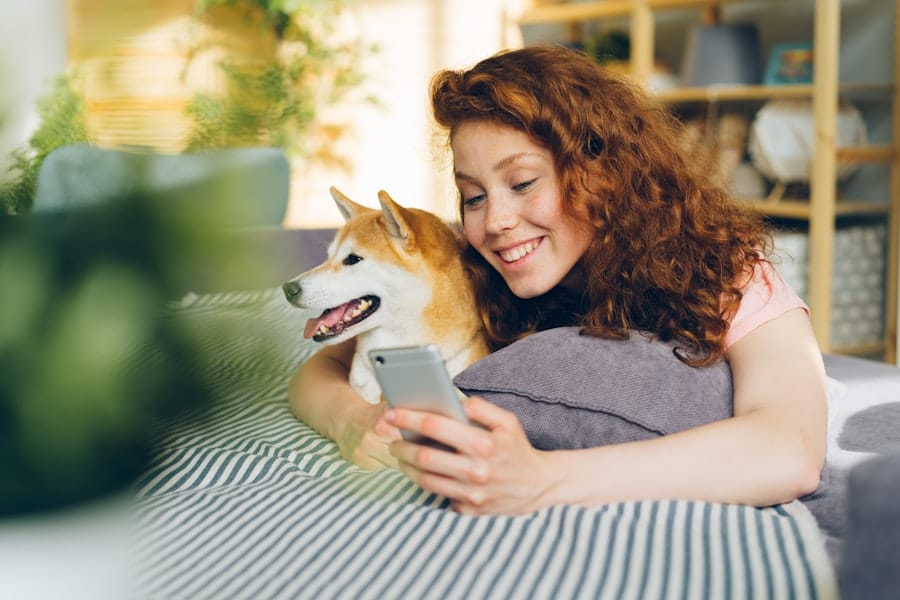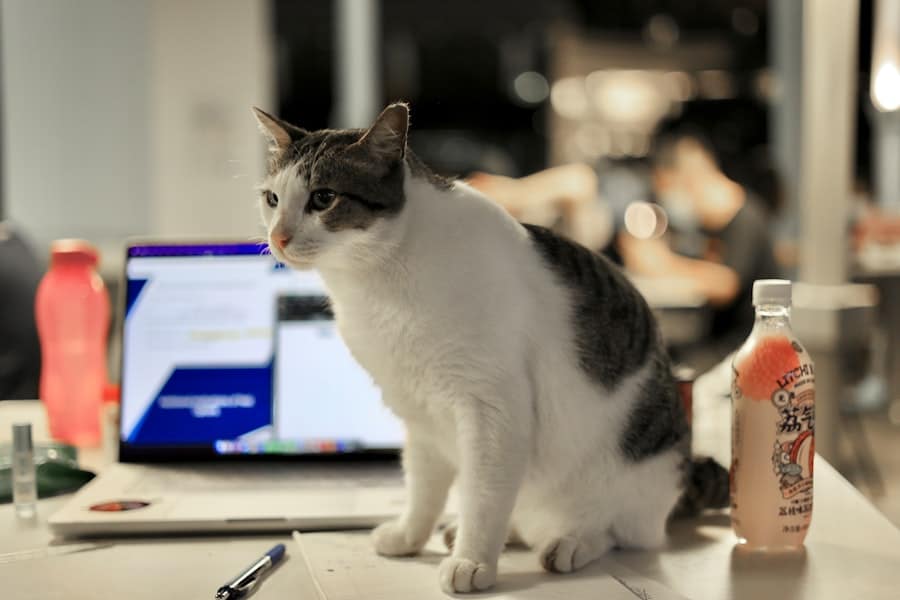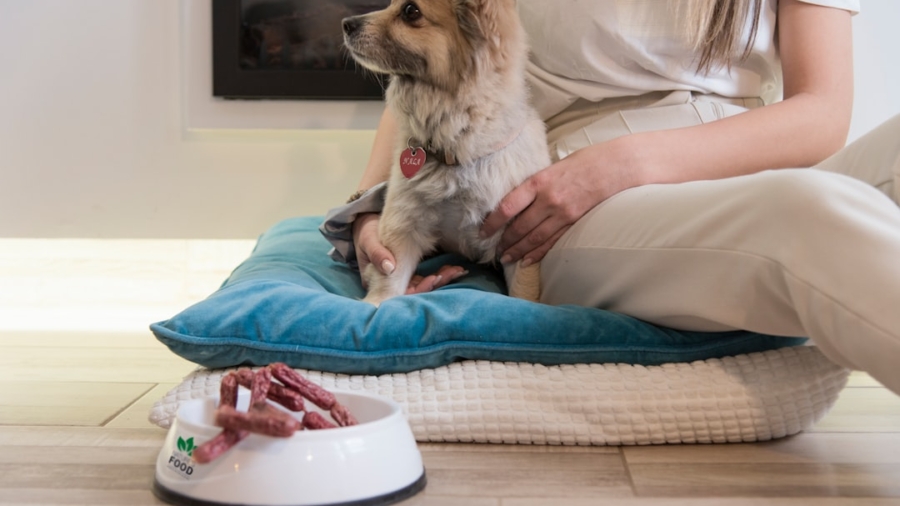The Internet of Things (IoT) has revolutionized various sectors, and pet care is no exception. As technology continues to advance, the integration of IoT devices into the daily lives of pet owners has transformed how we care for our furry companions. The concept of IoT refers to the interconnection of everyday objects to the internet, allowing them to send and receive data.
In the realm of pet care, this means that pet owners can now monitor, manage, and enhance their pets’ lives through smart devices that provide convenience, safety, and health benefits. The rise of IoT in pet care is driven by a growing demand for innovative solutions that cater to the needs of both pets and their owners. With busy lifestyles and increasing responsibilities, pet owners are seeking ways to ensure their pets receive the best care possible without compromising their own schedules.
IoT technology offers a plethora of tools designed to simplify pet ownership, from automated feeding systems to health monitoring devices. This article delves into various IoT applications in pet care, highlighting how these advancements are reshaping the relationship between humans and their pets.
Key Takeaways
- IoT in pet care is revolutionizing the way we care for our furry friends, offering a range of automated and remote monitoring solutions.
- Automated feeding and watering systems provide convenience and ensure pets are well-fed and hydrated even when owners are away.
- Remote monitoring and tracking devices allow pet owners to keep an eye on their pets’ location and activity levels, providing peace of mind.
- Smart pet toys and entertainment options keep pets engaged and entertained, promoting mental stimulation and physical activity.
- Automated litter boxes and waste management systems make pet care easier and more hygienic, reducing the burden on pet owners.
Automated Feeding and Watering Systems
Automated feeding and watering systems represent one of the most practical applications of IoT technology in pet care. These devices allow pet owners to schedule feeding times, control portion sizes, and even dispense food remotely through smartphone applications. For instance, smart feeders can be programmed to release specific amounts of food at designated times, ensuring that pets receive their meals consistently, even when their owners are away.
This is particularly beneficial for busy professionals or those who travel frequently, as it alleviates concerns about leaving pets unattended for extended periods. Moreover, many automated feeders come equipped with features such as cameras and microphones, enabling owners to monitor their pets during feeding times. This two-way communication allows for interaction, providing reassurance to both the pet and the owner.
Additionally, some advanced models can track a pet’s eating habits and send notifications if there are any significant changes, which can be crucial for identifying potential health issues early on. The convenience and peace of mind offered by these systems exemplify how IoT technology can enhance the quality of life for both pets and their owners.
Remote Monitoring and Tracking Devices

Remote monitoring and tracking devices have become essential tools for pet owners who want to keep a close eye on their pets’ activities and whereabouts. GPS-enabled collars and tags allow owners to track their pets’ locations in real-time, providing peace of mind in case a pet wanders off or gets lost. These devices often come with geofencing capabilities, which send alerts to the owner’s smartphone if the pet leaves a designated safe zone.
This feature is particularly useful for adventurous pets that may be prone to exploring beyond their usual boundaries. In addition to location tracking, many remote monitoring devices also offer insights into a pet’s behavior and activity levels. Wearable devices can monitor metrics such as steps taken, sleep patterns, and even heart rate.
This data can help owners understand their pets’ health better and make informed decisions regarding exercise routines or dietary adjustments. For example, if a pet is less active than usual, it may indicate an underlying health issue that requires attention. By leveraging these IoT technologies, pet owners can foster a deeper connection with their pets while ensuring their safety and well-being.
Smart Pet Toys and Entertainment
The integration of IoT technology into pet toys has opened up new avenues for entertainment and engagement for pets. Smart pet toys are designed to stimulate a pet’s mind and body, providing interactive experiences that keep them entertained even when their owners are not home. These toys often feature built-in sensors that respond to a pet’s movements or actions, creating an engaging play environment that adapts to the pet’s behavior.
This allows owners to engage with their pets from afar, providing mental stimulation and reducing feelings of loneliness or boredom. Additionally, many smart toys come equipped with cameras that allow owners to watch their pets play in real-time, further enhancing the bond between owner and pet.
The ability to provide entertainment through technology not only enriches a pet’s life but also alleviates common behavioral issues associated with boredom.
Automated Litter Boxes and Waste Management
Automated litter boxes represent a significant advancement in the realm of pet care, particularly for cat owners. These smart devices are designed to simplify the often unpleasant task of cleaning up after pets by automatically sifting through litter and disposing of waste. Many models utilize sensors to detect when a cat has used the litter box, triggering a cleaning cycle shortly after.
This ensures that the litter box remains clean and odor-free without requiring constant manual intervention from the owner. In addition to convenience, automated litter boxes often come equipped with health monitoring features that can alert owners to potential health issues based on changes in a cat’s waste patterns. For example, if a cat’s litter box usage suddenly increases or decreases significantly, it may indicate underlying health problems such as urinary tract infections or gastrointestinal issues.
By providing timely notifications about these changes, automated litter boxes empower owners to seek veterinary care when necessary, ultimately contributing to better overall health for their pets.
Health and Wellness Monitoring Devices

Health and wellness monitoring devices have emerged as vital tools for proactive pet care in recent years. These IoT-enabled gadgets allow pet owners to track various health metrics related to their pets’ well-being. Wearable devices such as collars or harnesses equipped with sensors can monitor vital signs like heart rate, respiratory rate, and activity levels.
This data is invaluable for identifying potential health issues early on and ensuring that pets receive appropriate care. For instance, some health monitoring devices can detect changes in a pet’s activity levels that may indicate pain or discomfort. If a normally active dog suddenly becomes lethargic or shows signs of distress during exercise, the device can alert the owner through an app notification.
This early warning system enables prompt veterinary intervention, which can be crucial in preventing more serious health complications down the line. Furthermore, many of these devices also provide insights into weight management by tracking caloric expenditure during physical activities, helping owners maintain their pets’ optimal weight.
Safety and Security Solutions for Pets
Safety and security solutions powered by IoT technology have become increasingly important for pet owners concerned about their pets’ well-being. Smart home security systems can be integrated with pet monitoring devices to create a comprehensive safety net for pets at home. For example, cameras equipped with motion detection can alert owners if unusual activity is detected while they are away, allowing them to check in on their pets remotely.
Additionally, some security solutions include features such as smart locks or doorbell cameras that enable owners to grant access to trusted individuals who may need to check on their pets while they are away. This level of control not only enhances security but also provides peace of mind for pet owners who want to ensure their pets are safe in their absence. Furthermore, some advanced systems can even monitor environmental conditions within the home, such as temperature and humidity levels, ensuring that pets remain comfortable regardless of external weather conditions.
The Future of IoT in Pet Care
As technology continues to evolve at an unprecedented pace, the future of IoT in pet care looks promising. The ongoing development of innovative devices will likely lead to even more sophisticated solutions that cater to the diverse needs of pets and their owners. From enhanced health monitoring capabilities to more interactive entertainment options, the potential applications of IoT technology in this field are virtually limitless.
Moreover, as awareness grows regarding the importance of responsible pet ownership and animal welfare, IoT solutions will play a crucial role in promoting better care practices among pet owners. By leveraging data-driven insights provided by these technologies, owners will be better equipped to make informed decisions about their pets’ health and well-being. Ultimately, the integration of IoT into pet care not only enhances convenience but also fosters deeper connections between humans and their beloved companions, paving the way for a future where technology and compassion coexist harmoniously in the realm of animal care.
In the rapidly evolving world of technology, the Internet of Things (IoT) is making significant strides in various sectors, including pet care. Automated solutions are revolutionizing how pet owners interact with and care for their furry friends, offering conveniences like smart feeders, health monitoring devices, and automated litter boxes. For those interested in exploring more about technological advancements, an article that complements this topic is


